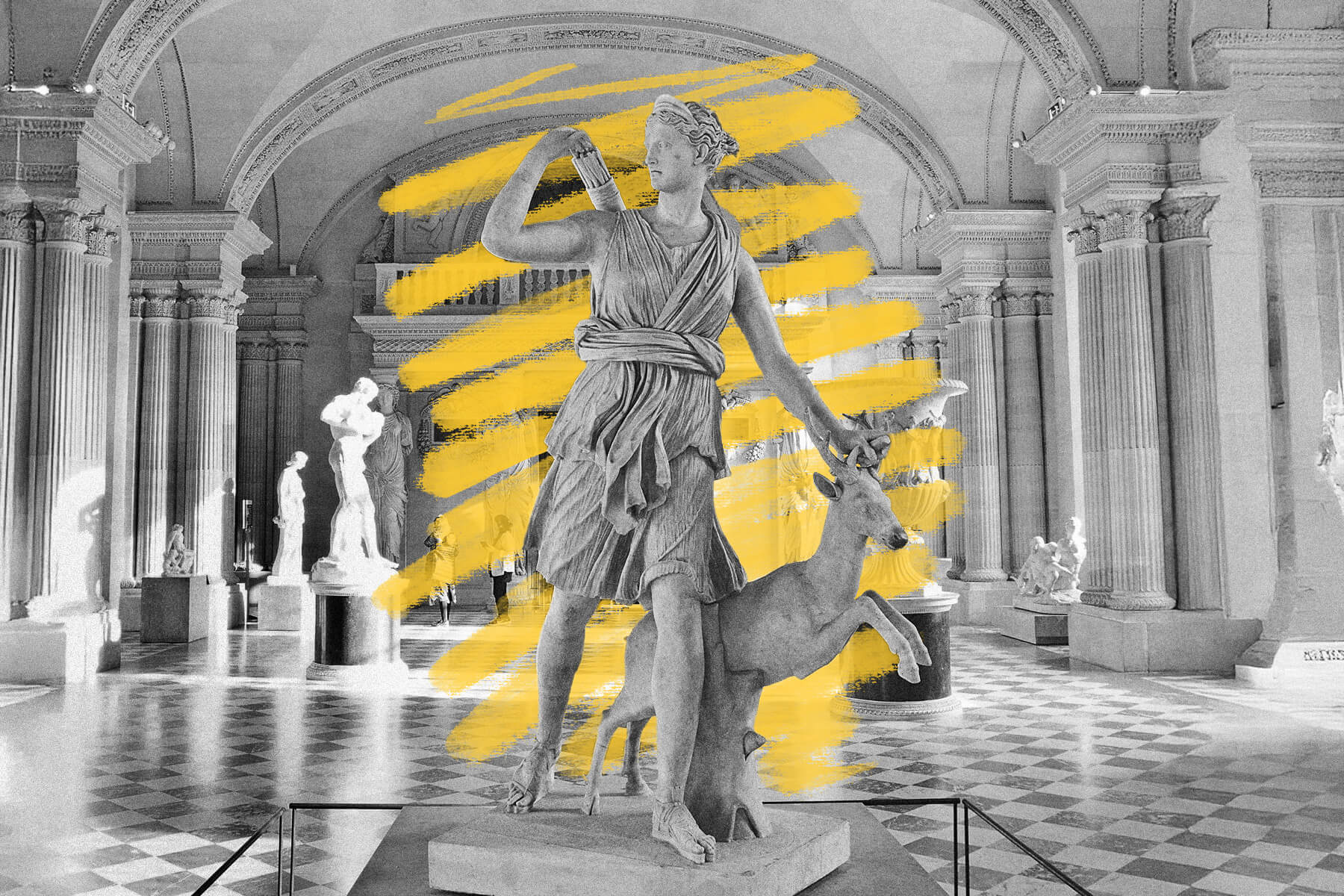Many Greek and Roman statues were originally painted vibrant colors. |
Arts & Culture |
 |
| |
| Artists didn't just use paint to produce this effect: Bronze, copper, silver, and gold added shine, while gemstones and colored marbles created textured inlays. Over time, exposure to the elements — along with cleaning and restoration — stripped away most of the color and detail, leaving only faint traces behind. Though archaeologists and art historians have noted traces of pigmentation on excavated Greek and Roman antiquities since the 18th and 19th centuries, it wasn't until the 1980s that the full, colorful scope of the past began to be understood. German archaeologist Vinzenz Brinkmann led the charge, and today, his detailed analysis and meticulous plaster recreations have helped revive long-obscured details such as the goddess Artemis' bright floral crown and blond hair. | |
| It was once thought that Greek and Roman sculptors intentionally favored minimalism; the presumed preference for form over decoration was considered the height of classical beauty and influenced contemporary art and culture. While some historians question the accuracy of the research methods and even the colors used in modern reconstructions, the lost hues of antiquity nonetheless reframe long-held beliefs, and remind us that history is often a work in progress. | |
 | |
 | |||
| |||
Say Goodbye to Dull Floors | |||
| Thank you for supporting our sponsors! They help us keep History Facts free. |
 | |||||||||
By the Numbers | |||||||||
| |||||||||
| |||||||||
 | |||||||||
| |||||||||
It took 4,000 pounds of meat a day to feed the Giza pyramid builders. | |||||||||
| Feeding the massive workforce that built Egypt's pyramids was a colossal task in itself. Archaeological evidence suggests that upwards of 4,000 pounds of meat were required every day to sustain the tens of thousands of laborers. These workers, most likely skilled laborers and farmers recruited during the agricultural off-season, were housed in nearby villages; it was there that researchers uncovered more than 175,000 animal bones and fragments. Cattle, goats, and sheep were a key part of the daily feast, along with beer and grains. The research, shared by the University of Michigan's Richard Redding in 2013, indicates that a central authority likely managed the Giza settlement, while others coordinated a large-scale livestock supply chain — an impressive feat for the time, not unlike every other aspect of the pyramids. | |||||||||
 | |||||||||||||||||||||||||||||||||||||||||||||||||||||||
Recommended Reading | |||||||||||||||||||||||||||||||||||||||||||||||||||||||
 | |||||||||||||||||||||||||||||||||||||||||||||||||||||||
| | |||||||||||||||||||||||||||||||||||||||||||||||||||||||
 | |||||||||||||||||||||||||||||||||||||||||||||||||||||||
| | |||||||||||||||||||||||||||||||||||||||||||||||||||||||
| + Load more | |||||||||||||||||||||||||||||||||||||||||||||||||||||||
| | |||||||||||||||||||||||||||||||||||||||||||||||||||||||
| |||||||||||||||||||||||||||||||||||||||||||||||||||||||
| |||||||||
| 700 N Colorado Blvd, #513, Denver, CO 80206 | |||||||||









Tidak ada komentar:
Posting Komentar